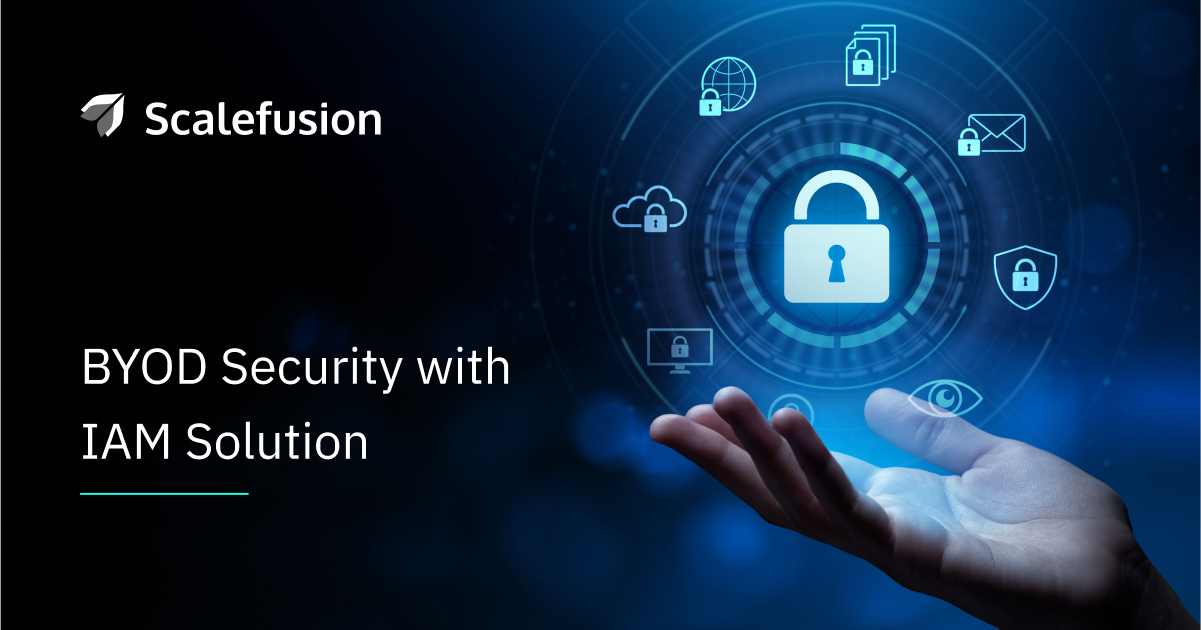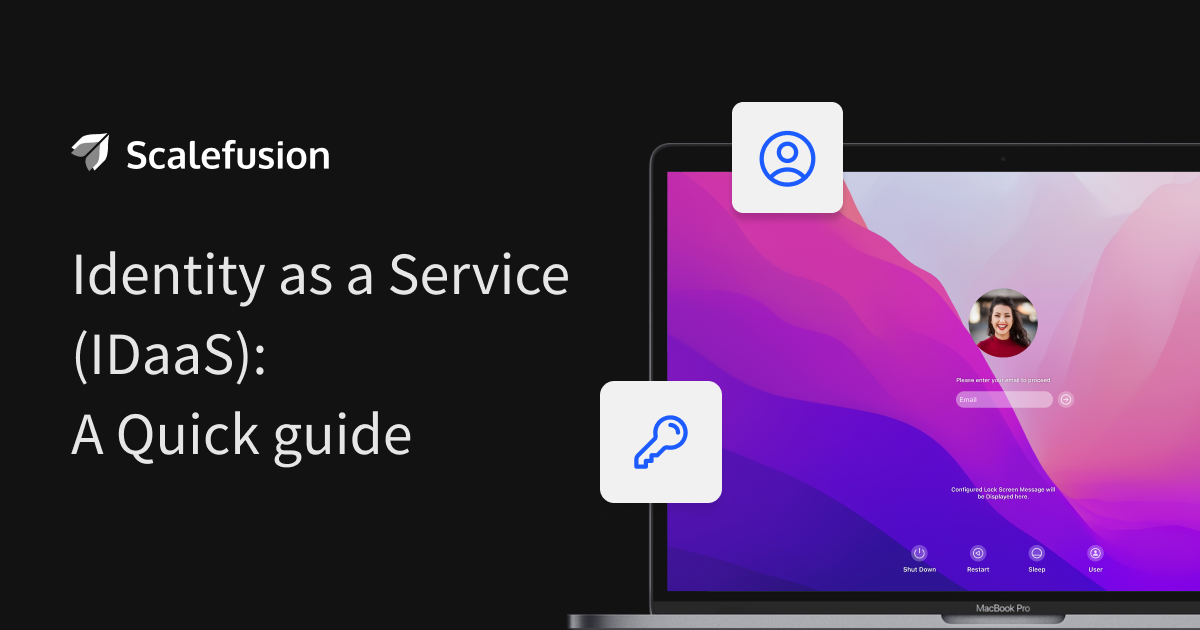How frustrating is managing multiple logins across devices during your workday? A lot, right? First, you’re constantly trying to remember multiple passwords. Then you face interruptions like password resets, multiple authentication prompts, or security checks every time you switch between your laptop, phone, or tablet, slowing down your productivity. This kind of friction is common in workplaces that have adopted Bring Your Own Device (BYOD) policies.
What about this on a company-wide scale? Employees waste time logging in repeatedly, managing passwords across multiple devices, or worse, reusing the same passwords across platforms. 44% or more of employees globally reuse passwords, which opens up significant security risks.[1] For businesses dependent on BYOD, this is a ticking bomb of productivity loss and security vulnerabilities.
This is where Single Sign-On (SSO) comes in. With SSO, employees can securely log in just once, regardless of the device, and access all their authorized apps and systems without needing to enter passwords repeatedly.
By integrating BYOD with SSO, companies can save employees valuable time and reduce the risk of security breaches from weak or reused passwords.
The Impact and Downsides of a BYOD Setup
In a BYOD setup, employees often use multiple apps and services, each requiring its own password. This can lead to a lot of frustrations and lost productivity, not to mention lapses in security. When people have to remember so many passwords, they tend to pick weak ones or reuse them across different accounts. A staggering 81% of data breaches are linked to compromised passwords, according to Verizon.[2] This makes the issue quite serious.
For IT teams, dealing with this password overload is no small task. Managing countless passwords, making sure they’re updated regularly, and handling password reset requests can be incredibly time-consuming. This not only increases the risk of security breaches but also frustrates employees, leading to lower productivity and more frequent IT support issues. The complexity of managing passwords in a BYOD environment can really take a toll on both security and efficiency.
Single Sign-On: Simplifying the User Experience
SSO is a master key that unlocks all the doors you need. Once logged in through an SSO system, users can access multiple applications without having to log in separately for each one.
How SSO Works:
- Unified Access: Users authenticate once through a central login page and gain access to various applications and services. This means no more juggling multiple passwords or facing login barriers throughout the day.
- Reduced Password Fatigue: By minimizing the number of passwords employees need to remember, SSO reduces the temptation to use weak or reused passwords. This simple change can significantly enhance overall security.
- Streamlined User Experience: SSO provides a smoother and faster login process, enhancing productivity and reducing frustration. Employees can spend more time focusing on their work rather than dealing with login issues.
Consider an employee at a marketing firm who needs to access their email, project management tool, and CRM system. Without SSO, they would need to enter different credentials for each application, which can be time-consuming and error-prone. With SSO, a single login grants them access to all these systems, saving time and reducing the risk of login-related security issues.
How SSO Strengthens BYOD Security
Managing security across various devices and applications can be next to impossible in a BYOD environment, which is heavily fragmented by device/OS diversity. SSO offers a streamlined way to ensure secure access to corporate apps without compromising user experience.
By allowing employees to authenticate once and gain access to all necessary systems through a single set of credentials, SSO simplifies the login process and eliminates the need for multiple passwords. But beyond convenience, SSO provides critical security enhancements that address many of the vulnerabilities introduced by BYOD policies.
Here’s how SSO strengthens BYOD security:
- Reduced Risk of Password Fatigue: By allowing employees to use just one set of credentials, SSO reduces the likelihood of weak or reused passwords, a common security risk. Fewer passwords mean fewer entry points for hackers.
- Centralized Access Control: With SSO, IT teams have a single point of control to manage who can access which applications and resources. This means more consistent security policies across devices and the ability to monitor and adjust access in real time.
- Improved Monitoring and Auditing: SSO systems typically include detailed reporting and monitoring features. IT can track who is accessing what, when, and from where, making it easier to identify suspicious activity or unauthorized access attempts.
- Multi-Factor Authentication (MFA) Integration: SSO often works hand-in-hand with MFA, adding an extra layer of security. Even if someone gains access to an employee’s password, MFA ensures they can’t access systems without a second verification step, such as a fingerprint or one-time code.
- Faster Response to Security Threats: With centralized access, IT teams can swiftly revoke or adjust permissions across all applications if a security threat is detected, preventing unauthorized access to sensitive information.
The Industry and Geographic Perspective on BYOD and SSO
The approach to BYOD and SSO varies across industries and regions, reflecting different challenges and strategies.
Industries
- Healthcare: Protecting patient data is foremost in healthcare. SSO simplifies access to electronic health records (EHRs) and other medical systems, ensuring that healthcare professionals can efficiently access necessary information without compromising security. By centralizing login processes, enforcing SSO helps maintain security, in turn maintaining compliance with regulations like HIPAA while reducing the risk of unauthorized access.
- Education: Educational institutions often have diverse user groups, including students, teachers, and administrative staff, all needing access to various platforms. SSO provides a unified access point, simplifying the login process and enhancing security across educational tools and systems. It also helps protect student identity online by managing access centrally.
- Finance: The financial sector faces strict regulations and high-security requirements. SSO solutions here integrate with advanced security measures, such as MFA and risk-based authentication, to secure financial transactions and sensitive data. By streamlining access management, financial institutions can meet compliance requirements while protecting against fraud and unauthorized access.
Regional Variations
- North America and Europe: These regions are at the forefront of adopting advanced security measures, including SSO and Zero Trust frameworks, particularly due to widespread BYOD policies. 73% of organizations in North America have a defined Zero Trust initiative in place, which heavily relies on secure access management strategies like SSO.[3] The rise of remote work and stringent data protection laws, such as GDPR in Europe and the California Consumer Privacy Act, have further driven SSO adoption. As organizations prioritize securing both internal and external access, SSO has become essential in mitigating password-related risks and ensuring compliance.
- Emerging Markets: The adoption of SSO is on the rise as BYOD policies and remote work become more commonplace in emerging markets. While cost and infrastructure limitations have historically slowed down initial adoption, the growth in demand for secure access management systems is undeniable. The global SSO market, valued at USD 3.51 billion in 2022, is expected to grow to USD 10.80 billion by 2031 at a CAGR of 13.3%.[4] This indicates a broader trend of increasing reliance on SSO across various markets, including emerging ones. As these regions mature technologically, SSO will play an essential role in managing secure access, especially in BYOD environments where simplifying authentication across devices is required.
BYOD Security with Scalefusion OneIdP’s SSO
Whether it’s a BYOD setup or a traditional office environment, securing access across various devices is vital. Scalefusion helps enterprise IT teams enforce corporate policies on work apps and resources on BYO devices. Further with Scalefusion OneIdP’s SSO solution, IT teams can ensure that employees can securely access multiple apps with a single login, regardless of using personal laptops, smartphones, or tablets.
Scalefusion OneIdP simplifies user authentication and also strengthens security with centralized access control, integration with multi-factor authentication (MFA), and real-time access monitoring. This eliminates password fatigue, reduces entry points for attacks, and enhances productivity by ensuring that employees can access the tools they need quickly and securely.
Contact our experts and schedule a demo to learn more about Scalefusion OneIdP.
References:


